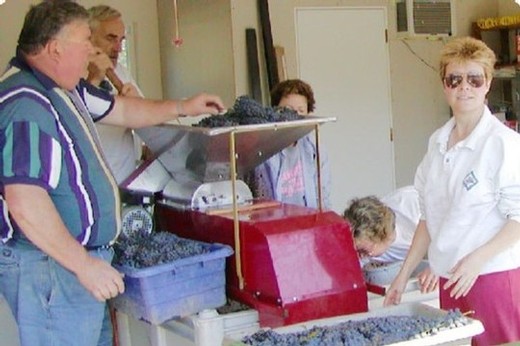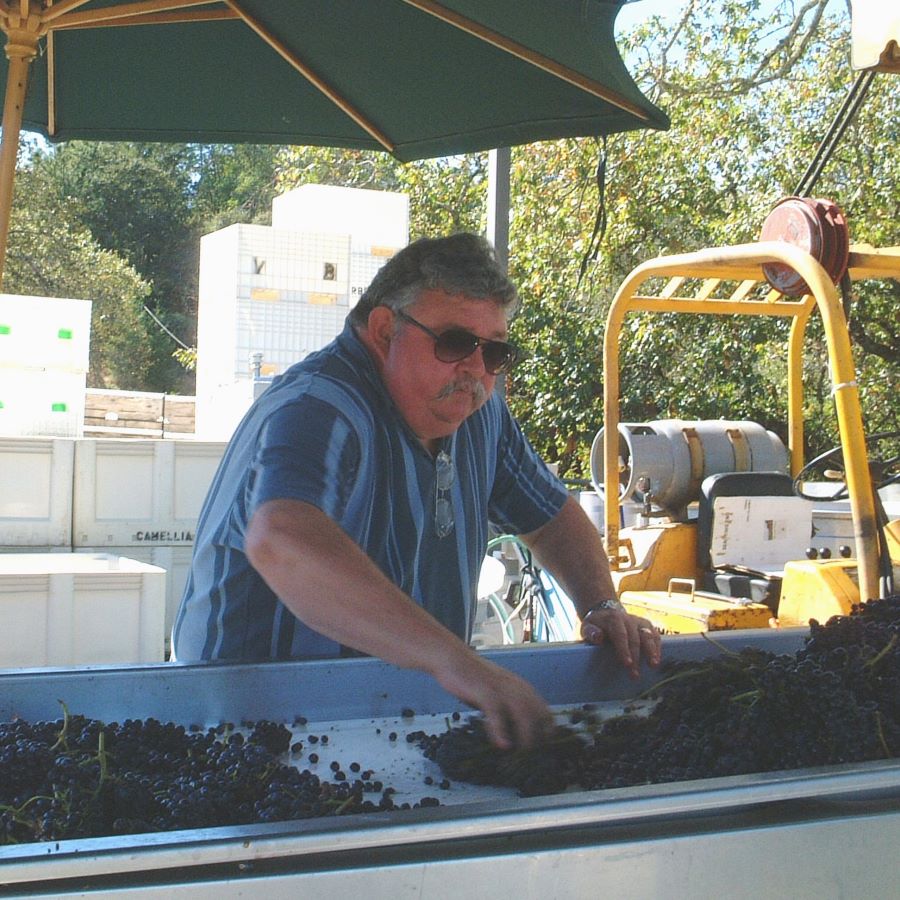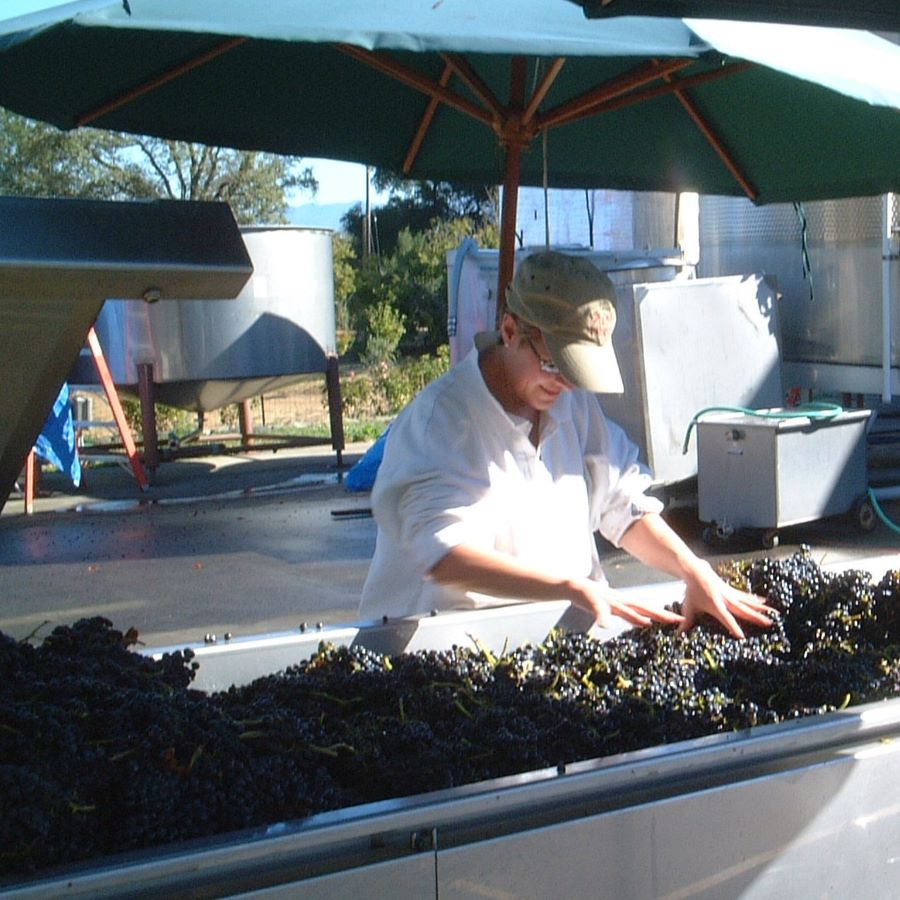Syrah, Serendipity and the Shaping of Amista
A Winemaker's Journey

…in three pivotal Syrah harvests
As we celebrate our 20th anniversary, I'm excited to share a series of short weekly posts that take you behind the scenes, revealing memorable moments that have shaped our journey at Amista Vineyards.
Garage Syrah – Our First Harvest in Healdsburg
 We finally moved to our vineyard in Healdsburg in June 2002, eager to begin a new life in Sonoma wine country. In 2000, we had replaced half of the Chardonnay vines with Syrah, and by 2002, those young vines were just starting to produce. A true viticulturist might have told us to drop all the fruit and let the vines mature for another year to strengthen the vines and roots. But Mike had other plans—he was determined to MAKE WINE!
We finally moved to our vineyard in Healdsburg in June 2002, eager to begin a new life in Sonoma wine country. In 2000, we had replaced half of the Chardonnay vines with Syrah, and by 2002, those young vines were just starting to produce. A true viticulturist might have told us to drop all the fruit and let the vines mature for another year to strengthen the vines and roots. But Mike had other plans—he was determined to MAKE WINE!
We harvested 3 tons of grapes—an amount that sounded massive to me—and decided to make our wine right in the garage. Mike’s brother, Bob, and his wife, Anne, came to help, along with some neighbors. Our neighbors even lent us a small crusher/destemmer, which saved time and improved the quality by ensuring all the stems, which can make the wine taste bitter, were removed.
It was hard work, but we had a blast. There was something magical about working shoulder-to-shoulder with friends and family, laughing together as purple juice stained our hands. This was one of those unexpected pleasures of living in wine country—a moment that felt like a turning point in our journey.
Our First Commercial Harvest – 2003 Syrah
October 2003 marked a significant milestone: our first commercial harvest. By this time, Mike had fully roped me into his dream of making wine. So much so that, despite a business meeting in San Francisco, I woke up early and drove back to Healdsburg to join him for this special day. We spent the entire day sorting grapes at the winery on West Dry Creek Road where we made our first wines. Friends dropped by to help, making the experience even more exhilarating. It was one of those perfect fall days in wine country—warm, sunny, and full of promise as we worked with our hands to turn raw grapes into what would become our 2003 Amista Vineyards Syrah.
For both Mike and me, this was uncharted territory. Mike, a former chemist, had spent his life conducting experiments and teaching. I had been a human development expert, advising and coaching leaders. Neither of us had ever MADE anything, started a business, or even worked together before. Little did we know that this harvest would spark a huge life change for us. We had no idea what we were getting into but we found ourselves fully immersed in the wine country dream.
That day, our hands were sticky with grape juice, our bodies sore from standing at the sorting table all day, but we were together, looking out over Dry Creek Valley on a beautiful fall day, making our first Amista wine.
Making Our First Rosé – A Happy Accident

In 2005, Mike’s scientific curiosity led to an experiment: machine-harvesting our Syrah. This process involves a massive machine that straddles the grapevine rows, shaking the grapes free. The harvesting happens in the middle of the night to take advantage of cooler temperatures. While I slept soundly, Mike was out in the vineyard, energized by the sight of this machine in action. He kept encouraging the operator to do just one more row, which resulted in more grapes than we had planned to pick.
The next morning, the winery called with a dilemma. Although all the grapes fit in the fermentation tank, they would overflow once fermentation started. Mike had a quick solution: he had some juice pumped out and transferred into barrels. Since it had only spent a couple of hours on the skins, the juice was a pale pink. His plan was to blend it back into the rest of the Syrah after fermentation.
A few days later, we tasted that pink juice and fell in love. What began as a way to prevent a spill turned into our first Rosé of Syrah. This happy accident was just the beginning of many more surprises, guiding us in unexpected and delightful directions as our wine country life continued to unfold.
Still Thirsty?
If you want to learn more, here is a curated list of resources.
How Long Does it Take a New Vineyard to Yield Grapes?
Are Hand-Picked Grapes Better Than Machine-Harvested?
Wine Tip: Everything You Ever Wanted to Know About Rosé

